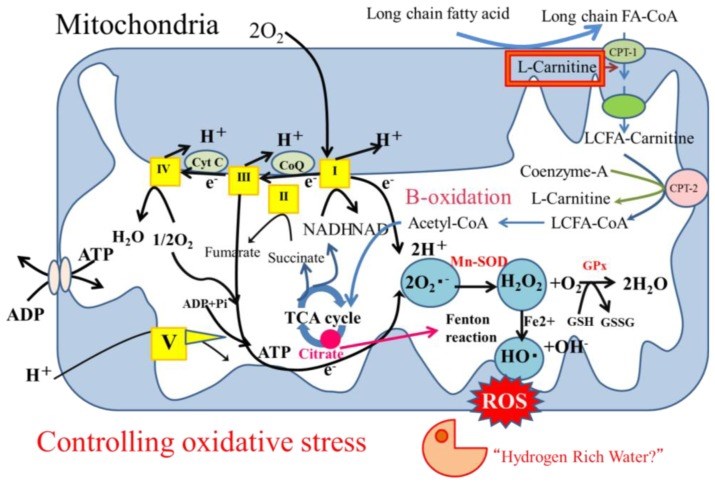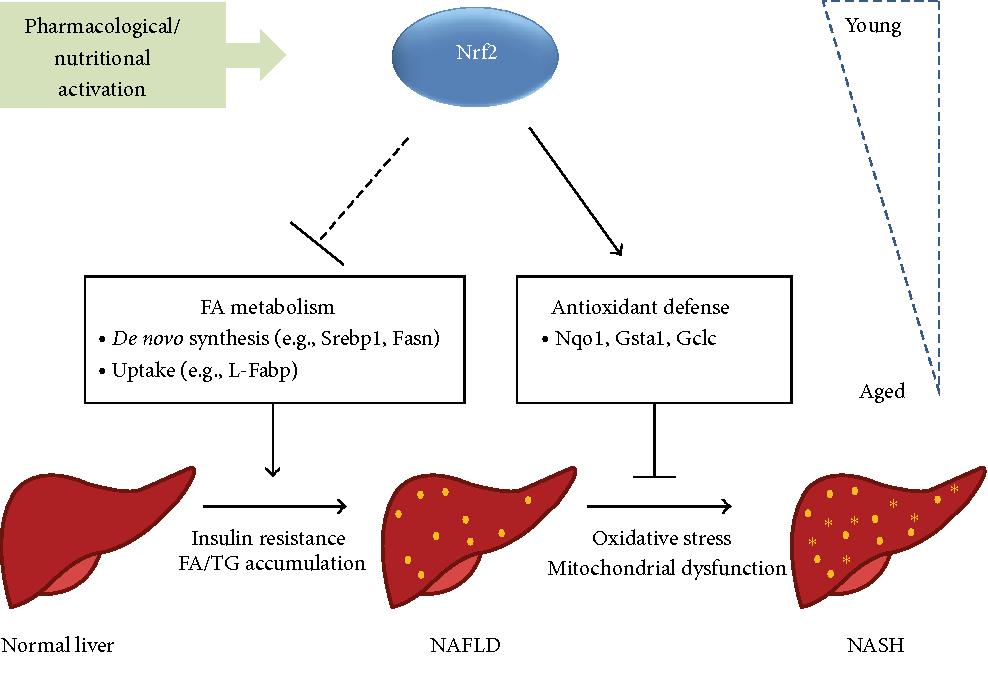NASH Target Development Services for Oxidative Stress
Non-alcoholic fatty liver disease (NAFLD) encompasses a large spectrum of conditions ranging from fatty liver to non-alcoholic steatohepatitis (NASH), which can progress to cirrhosis and cancer. A major factor proposed to be important in the development of primary NASH is oxidative stress. Creative Biolabs has a professional team and advanced laboratory in providing therapeutic strategies targeting different kinds of diseases. We are confident to offer our honor clients comprehensive services targeting oxidative stress for NASH.
Introduction of Oxidative Stress
Oxidative stress refers to an imbalanced cellular state in which the production of reactive oxygen/nitrogen species (ROS/RNS) increases to an extent and exceeds the normal operating free radical clearing mechanisms, such as superoxide dismutase (SOD), glutathione peroxidase (GPx), and catalase. Oxidative stress can occur by increased production of pro-oxidant species, which saturate the anti-oxidant machinery or by a direct insult to the anti-oxidant machinery. Oxidative stress appears to be responsible for initiating necroinflammation. ROS produced during the metabolism of free fatty acids in microsomes, peroxisomes and mitochondria constitute the established source of oxidative stress.
 Fig.1 Mitochondria as producers of oxidative stress. (Takaki, 2013)
Fig.1 Mitochondria as producers of oxidative stress. (Takaki, 2013)
The Role of Oxidative Stress in NASH
The role of oxidative stress in liver steatosis production and its progression to inflammation leading to steatohepatitis has already been discussed in relation to alterations in metabolism and pro-inflammatory transcription factors expression. Oxidative stress can contribute to the progression of NASH by stimulating both humoral and cellular immune responses. Many animal and human studies have observed the association between disease status of NAFLD/NASH and biomarkers of oxidative stress. There is no doubt that factor such as free radicals can cause oxidative stress in NAFLD/NASH patients to increase significantly. Mitochondrial abnormality may be associated with the onset and progression of NASH via excessive formation of mitochondrial ROS. Thus, targeting mitochondrial oxidative stress might be a good candidate for NASH treatment.
Treatment Targeting Oxidative Stress
-
Natural Antioxidants
The increasing evidences show the involvement of oxidative stress in the pathogenesis of NASH and stimulate the study of antioxidant effects. Now, antioxidants represent a novel class of medications that have shown some promising initial results in the treatment of NASH. It is likely that these therapies will be used in combination regimens with other agents that affect insulin sensitivity, such as pioglitazone or metformin. It was emphasized that oxidative stress is mediated by multiple oxidants and the efficacy of antioxidants is determined by the type of oxidants. Various antioxidants, some of which are free radical scavengers while others are not, may be effective for treatment of NAFLD/NASH. For instance, vitamin E may be effective when free radicals play a causative role but may not be so against the oxidation mediated by non-radical oxidants. -
Nuclear Factor Erythroid-2 Related Factor 2 (NRF2)
NASH is characterized by insulin resistance, increased lipogenesis and gluconeogenesis, inflammation, and oxidative stress. These symptoms can be mechanistically linked to endoplasmic reticulum stress and dysfunction of the antioxidant response controlled by the transcription factor nuclear factor E2-related factor 2 (NRF2). NRF2 is an oxidative stress-mediated transcription factor with a variety of downstream targets aimed at cryoprotection and it acts as a defense system in the development of NASH. Considering previous evidence, pharmacologic activation of NRF2 ameliorates hepatitis and diabetes in diverse mouse models. Therefore, some scientists now focus on targeting NRF2 for NASH treatment.
 Fig.2 Schematic summary of the proposed protective roles of NRF2 in NAFLD/NASH. (Chambel, 2015)
Fig.2 Schematic summary of the proposed protective roles of NRF2 in NAFLD/NASH. (Chambel, 2015)
Creative Biolabs is a pioneer in disease target development for a broad range of project objectives. If you are interested in our services targeting oxidative stress (including but not limited to activator and natural antioxidants development) for the treatment of NASH, please feel free to contact us for more information.
References
- Takaki, A.; et al. Multiple hits, including oxidative stress, as pathogenesis and treatment target in non-alcoholic steatohepatitis (NASH). International journal of molecular sciences. 2013, 14(10): 20704-20728.
- Chambel, S.S.;et al. The dual role of Nrf2 in nonalcoholic fatty liver disease: regulation of antioxidant defenses and hepatic lipid metabolism. BioMed research international. 2015.
 For Research Use Only.
For Research Use Only.